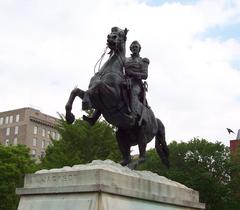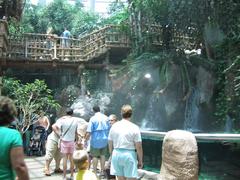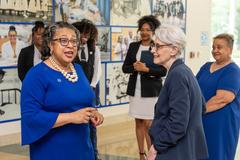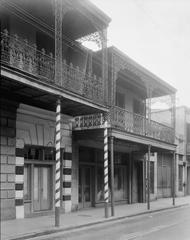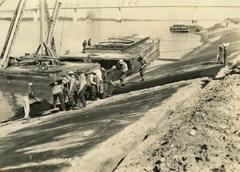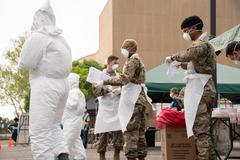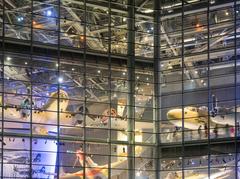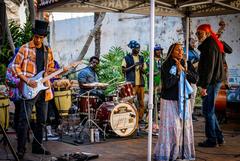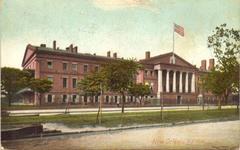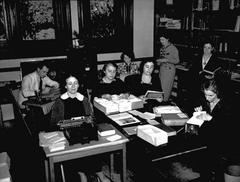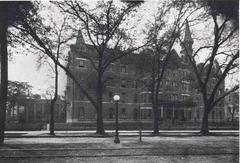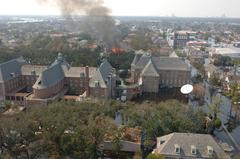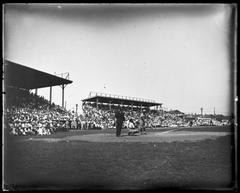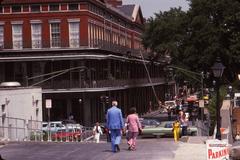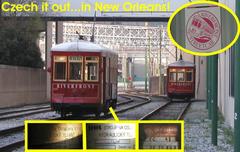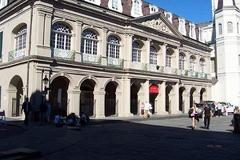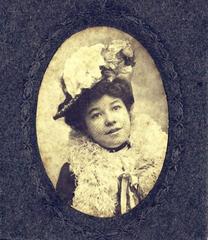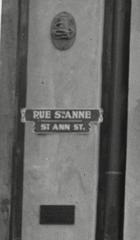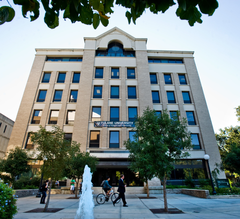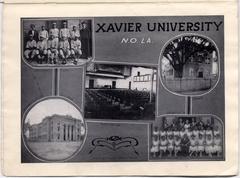
Confederate Memorial Hall New Orleans: Visiting Hours, Tickets, and Historical Significance
Date: 04/07/2025
Introduction
Confederate Memorial Hall, also known as the Louisiana Civil War Museum at Confederate Memorial Hall, remains one of New Orleans’ most historically and architecturally significant sites. Established in 1891, the museum immerses visitors in the complex narratives of the American Civil War, with a focus on the Confederate experience and Louisiana’s pivotal role. Renowned for housing the world’s second-largest collection of Confederate artifacts—over 5,000 items, including flags, uniforms, personal effects, and rare documents—the museum serves as both a repository of Southern memory and a venue for critical engagement with Civil War history.
Situated in the city’s Arts and Warehouse District, Confederate Memorial Hall is not only a historical institution but also a touchstone for ongoing debates about the legacy of Confederate symbols in public spaces. While originally intended as a memorial to Confederate soldiers, the museum has evolved to present a more nuanced perspective, incorporating broader contexts such as slavery, Reconstruction, and African American experiences. Visitors can explore a range of permanent and temporary exhibits, attend educational programs, and join guided tours that provide deeper insight into the era and its enduring impact. Its central location—close to landmarks like the National WWII Museum—makes it a prominent stop for history enthusiasts and tourists.
Table of Contents
- Introduction
- Origins and Historical Context
- Architectural Significance
- Collections and Artifacts
- Interpretation and Controversy
- Visitor Information: Hours, Tickets, and Location
- Travel Tips and Accessibility
- Special Events and Tours
- Photography and Exhibits
- Preservation and Community Engagement
- Frequently Asked Questions (FAQ)
- Conclusion
Origins and Historical Context
Founded in 1891 as a memorial to Confederate soldiers, Confederate Memorial Hall is the oldest museum in Louisiana dedicated to Civil War history. Its roots lie in the post-Reconstruction “Lost Cause” movement, which sought to honor Confederate veterans and romanticize the Southern cause, often downplaying the centrality of slavery to the conflict. The museum’s creation was driven by groups like the United Daughters of the Confederacy and Sons of Confederate Veterans, who contributed artifacts, documents, and memorabilia, emphasizing the valor of Confederate leaders and soldiers (history.com).
Over time, the hall has become a focal point in New Orleans’ evolving public memory, reflecting both the city’s Confederate legacy and the ongoing debates about how the Civil War is commemorated and interpreted.
Architectural Significance
Designed by Thomas Sully, the museum is an exemplar of Richardsonian Romanesque architecture. Its robust red brick and terra cotta façade, rounded arches, and fortress-like design impart a solemn presence, while the interior’s high ceilings, stained glass, and dark wood paneling evoke a chapel-like atmosphere. The building itself, completed in 1888, is listed on the National Register of Historic Places and recognized as one of the city’s architectural treasures.
Collections and Artifacts
Artifact Highlights
- Flags: Over 140 Confederate regimental and national flags, including the flag flown over New Orleans at secession.
- Uniforms & Weapons: Garments worn by generals like Braxton Bragg and P.G.T. Beauregard, along with Louisiana-made swords and firearms.
- Personal Effects: Belongings of Robert E. Lee, Jefferson Davis (including his Bible and a crown of thorns from Pope Pius IX), and other key figures.
- Portraits & Art: Dozens of 19th-century oil portraits and battle scenes.
- Everyday Soldier Artifacts: Letters, diaries, canteens, and field equipment.
- Unit Memorabilia: Items from the Washington Artillery, Louisiana Tigers, and other notable units.
Artifacts are displayed throughout the main hall and annex, with rotating special exhibits such as “The Will to Fight,” which examines Confederate soldiers’ motivations (Confederate Memorial Hall Museum New Orleans).
Interpretation and Controversy
The museum has long presented Civil War history from the Confederate perspective, emphasizing military valor and Southern heritage. However, this narrative has been the subject of significant criticism, particularly for minimizing slavery and racial injustice. In recent years, Confederate Memorial Hall has responded by introducing more contextual exhibits and interpretive panels that address the broader implications of the conflict and its legacy (history.com).
The institution occupies a unique position in the national debate over Confederate symbols. Unlike outdoor monuments, the hall’s status as a museum allows for more nuanced storytelling and direct educational engagement. Nevertheless, activist groups continue to call for further reform, including greater inclusion of African American perspectives and examination of the “Lost Cause” mythos (ebsco.com, constitutioncenter.org).
Visitor Information: Hours, Tickets, and Location
- Location: 929 Camp Street, New Orleans, LA (Arts and Warehouse District)
- Hours: Tuesday–Saturday, 10:00 AM–4:00 PM; closed Sundays, Mondays, and major holidays. Check the official website for updates.
- Admission: $10 for adults, $5 for children under 14 (occasionally free for children under 8). Discounts may be available for seniors, students, and groups.
- Tickets: Purchase on-site; online ticketing may be available (WhichMuseum).
- Contact: +1 504-523-4522
The museum’s central location provides easy access to public transportation and nearby attractions like the National WWII Museum and Ogden Museum of Southern Art.
Travel Tips and Accessibility
- Accessibility: While the museum strives to accommodate all visitors, parts of the historic building may have limited wheelchair access. Ramps and elevators are available in most areas—contact the museum ahead of your visit for specific needs.
- Parking: Metered street parking is available but limited. Public transit or rideshare is recommended.
- Facilities: Restrooms and a small gift shop are on-site. No café, but dining options abound in the surrounding district.
Special Events and Tours
The museum hosts a variety of educational programs, lectures, and temporary exhibitions throughout the year. Guided tours can be arranged by appointment, offering a deeper dive into the collection and building history. Keep an eye on the museum’s events page or social media for the latest schedule.
Photography and Exhibits
Photography is permitted in most areas, but restrictions may apply to flash or sensitive artifacts. The building’s dramatic architecture and period interiors provide excellent photo opportunities, particularly at the grand arched entrance and main exhibition hall.
Preservation and Community Engagement
Since its founding, Confederate Memorial Hall has relied on community support and donations from veterans’ families, making its collection deeply personal. The museum is committed to ongoing artifact conservation, with initiatives such as the “Adopt-a-Flag” program for textile preservation. It also engages with local schools and organizations to broaden public understanding of Civil War history (WhichMuseum).
Frequently Asked Questions (FAQ)
Q: What are the museum’s visiting hours?
A: Tuesday–Saturday, 10:00 AM–4:00 PM; closed Sundays, Mondays, and major holidays.
Q: How much are tickets?
A: $10 for adults, $5 for children under 14; discounts for groups and seniors may apply.
Q: Is the museum wheelchair accessible?
A: Partially; ramps and elevators serve most areas. Contact the museum for specific accessibility needs.
Q: Are guided tours available?
A: Yes, by appointment. Contact staff to schedule.
Q: Can I take photographs?
A: Yes, except where restricted. Flash use may be limited.
Q: What other attractions are nearby?
A: The National WWII Museum, Ogden Museum of Southern Art, French Quarter, and St. Charles Avenue.
Conclusion
Confederate Memorial Hall is both a window into the Civil War’s Southern experience and a participant in ongoing debates about history and memory. Its architecture, artifacts, and evolving interpretive mission offer a multifaceted visitor experience. While the museum’s narrative still centers on the Confederate perspective, recent efforts to broaden its scope demonstrate a commitment to more inclusive storytelling.
To make the most of your visit, check the museum’s website for current hours, tickets, and event listings. Consider complementing your experience with visits to other local museums that provide additional context on New Orleans’ diverse history. For guided tours and exclusive content, download the Audiala app, and stay connected via social media for updates on special events.
Images:
Related Internal Links:
References and Further Reading
- Confederate Memorial Hall Museum New Orleans: Visiting Hours, Tickets, and Historical Collections, 2025 (https://confederatemuseum.com)
- Confederate Memorial Hall New Orleans: Visiting Hours, Tickets, History, and Controversy, 2025 (https://www.history.com/articles/a-tale-of-two-cities-new-orleans-and-the-fight-over-confederate-monuments)
- Visitor Experience and Practical Tips, 2025 (https://whichmuseum.com/museum/confederate-memorial-hall-new-orleans-37983)
- New Orleans Official Tourism Site, 2025 (https://www.neworleans.com)
- Nomadic Matt Travel Guide: New Orleans, 2025 (https://www.nomadicmatt.com/travel-blogs/4-days-in-new-orleans/)





